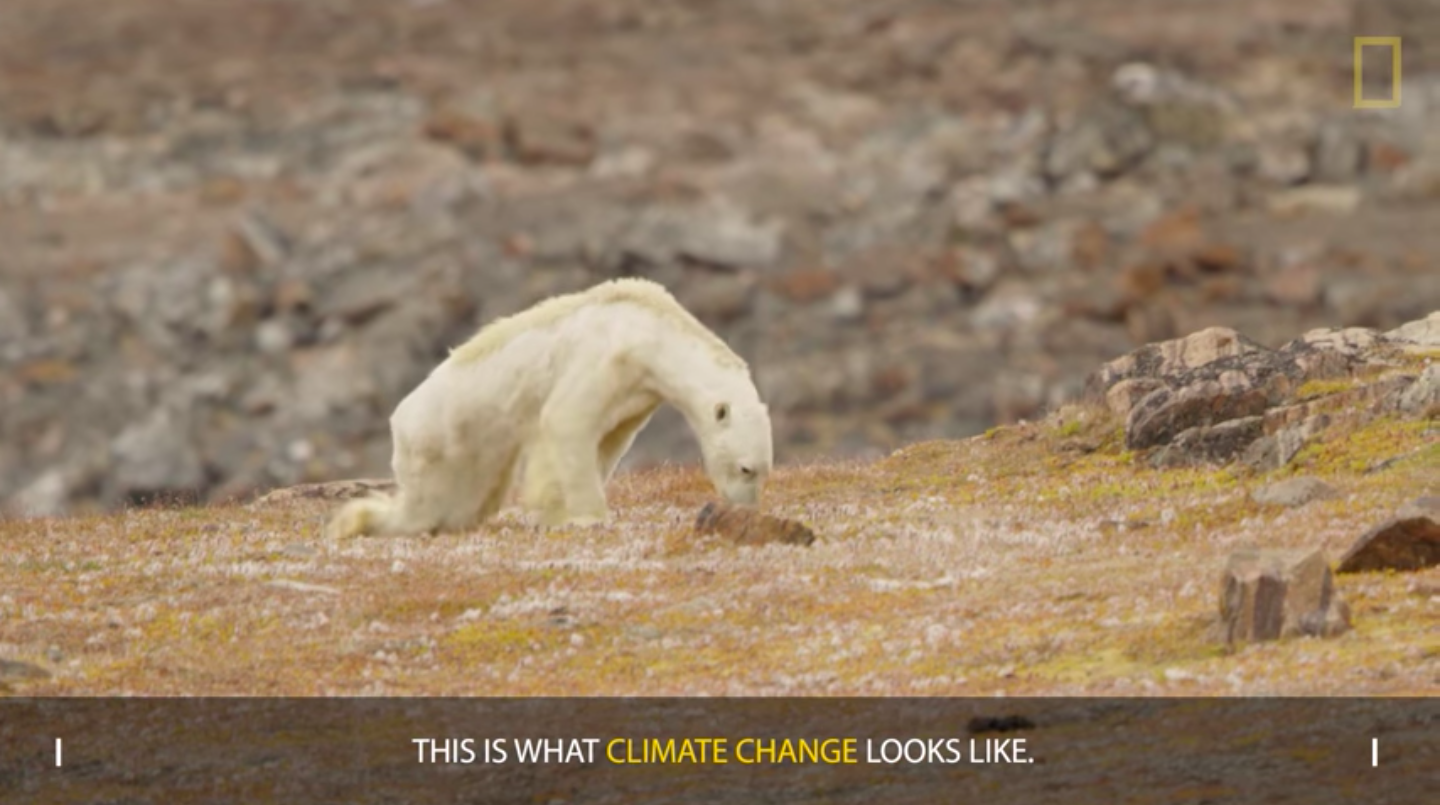National Geographic admits skeletal polar bear-global warming link ‘went too far’
One of the world’s most respected publications says the reasons for an individual polar bear’s apparent starvation are impossible to ascertain, after originally attributing them to climate change.

The most watched video — seen by an estimated 2.5 billion people — in the history of National Geographic, no longer directly links the apparent starvation of a polar bear to global warming in the Arctic.
The footage of the emaciated polar bear was recorded on Nunavut’s Somerset Island in July 2017 by National Geographic photojournalist Paul Nicklen for SeaLegacy, a conservancy that runs regular expeditions in the North to document the effects of rising global temperatures.
The professionally produced film, a wordless series of clips set to mournful music, was posted on Instagram, on December 6 and re-published on the National Geographic website five days later. National Geographic added captions, including one stating “this is what climate change looks like” (pictured above and, at the time this article was published, still available on YouTube).
[As sea ice gets scarcer, polar bear attacks on people become more frequent]
On June 1, however, National Geographic walked back from that claim, changing the caption to “this is what starvation looks like.”
“National Geographic went too far in drawing a definitive connection between climate change and a particular starving polar bear in the opening caption of our December 2017 video about the animal,” the magazine wrote in an article titled Starving-polar-bear photographer recalls what went wrong, published in the magazine’s August issue.
National Geographic added that while there is solid scientific evidence linking melting sea ice and a decline in polar-bear populations, “there is no way to know for certain why this bear was on the verge of death.”
The new caption restates verbatim the description of the video in Nicklen’s Instagram post.
[How fake news and starving bears could keep more complex stories of the Arctic from being told]
Cristina Mittermeier, another member of the filming crew, stressed at the time the film was released that even though it was impossible to determine the cause of the animal’s condition, the group had hoped the images of a starving polar bear in a snowless landscape would encourage discussions about the effects of global warming on the Arctic environment.
Likewise, Nicklen’s original post was careful not to make a direct link between the animal and warming temperatures, although his posting does suggest a connection.
“The simple truth is this — if the Earth continues to warm, we will lose bears and entire polar ecosystems. This large male bear was not old, and he certainly died within hours or days of this moment. But there are solutions. We must reduce our carbon footprint, eat the right food, stop cutting down our forests, and begin putting the Earth — our home — first.”